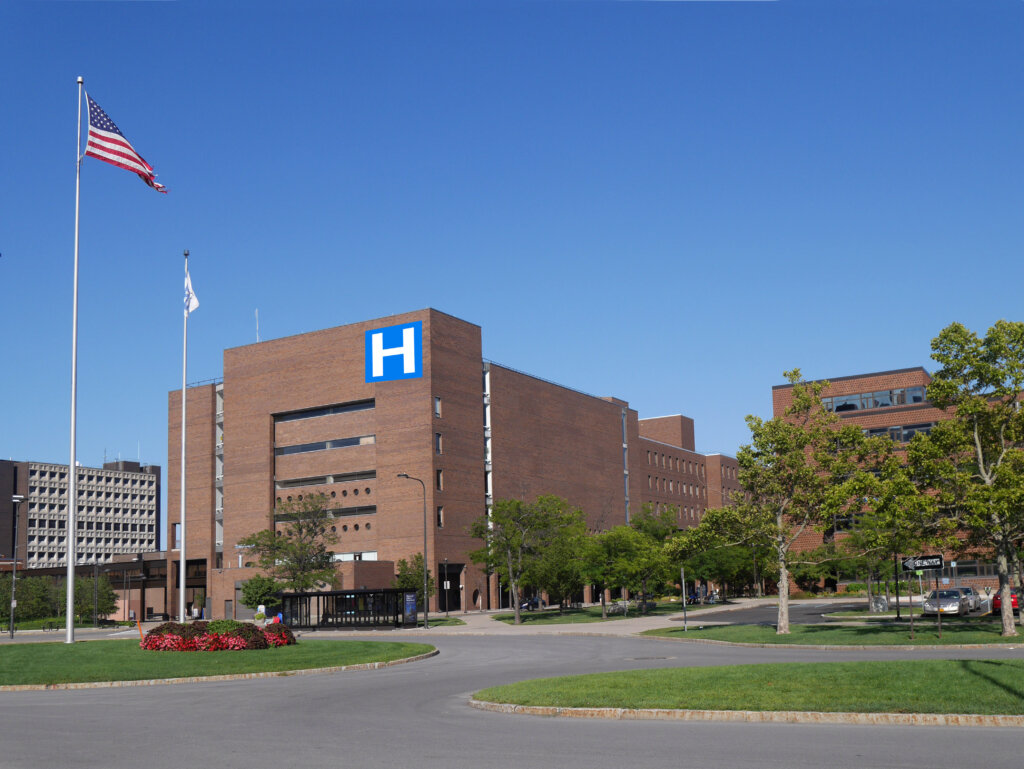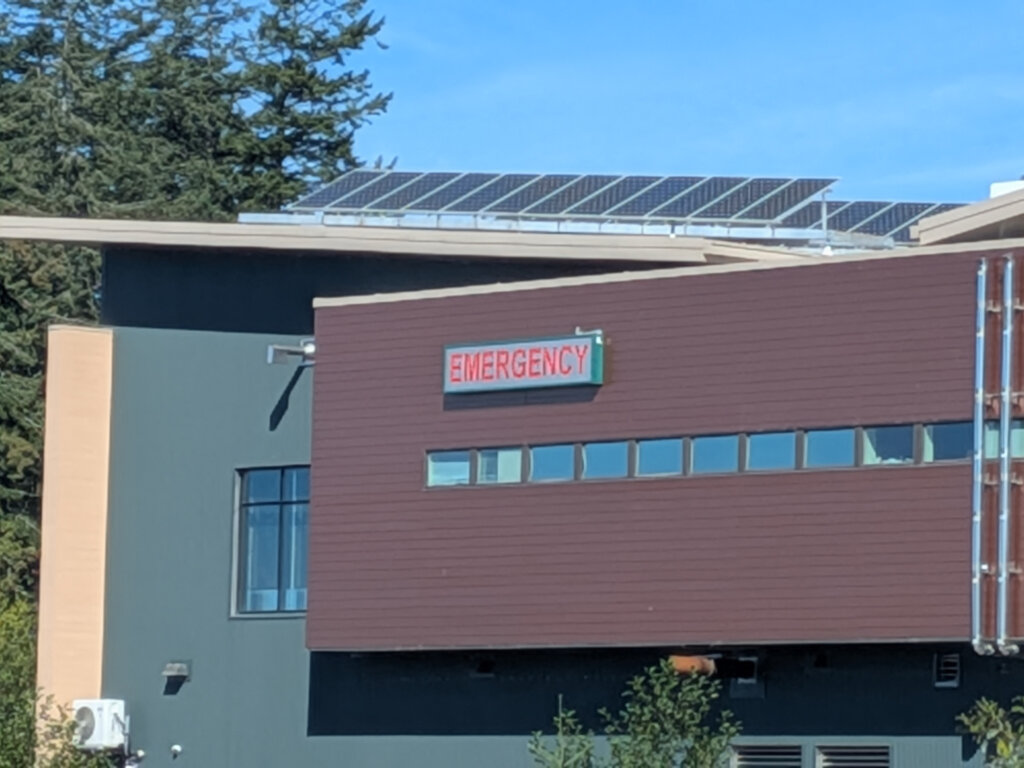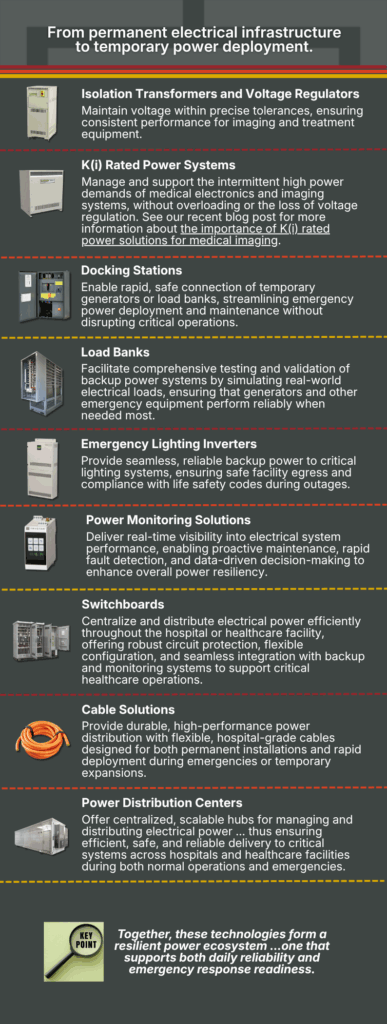Hospitals and healthcare facilities are facing historic and unparalleled challenges in maintaining electrical power resiliency amid a rapidly evolving landscape of grid power demands and outage threats. As the backbone of critical care, these institutions cannot afford even brief interruptions in power, which can jeopardize patient safety, disrupt essential medical procedures, and compromise the integrity of medical equipment. The increasing frequency of extreme weather events, cyberattacks, and aging electrical grid infrastructure has intensified the pressure on healthcare organizations to ensure uninterrupted electrical power and comprehensive emergency preparedness.
This article delves into the unique power resiliency pressures confronting today’s hospitals and healthcare facilities, while exploring the multifaceted risks that threaten operational continuity. It examines the regulatory landscape, technological advancements, and strategic approaches necessary to fortify power systems against both foreseeable and unexpected disruptions. By understanding these challenges and the innovative solutions available, hospitals and healthcare facilities can better safeguard their patients, staff, and communities in an era when power resiliency cannot be compromised.
Healthcare’s Power Dilemma
According to the American Society for Healthcare Engineering (ASHE) in its 2024 “Hospital Operations Survey“, many of the nation’s healthcare facilities operate within aging infrastructure, with more than half of hospital facility managers overseeing at least one building that’s over 50 years old. 1 These environments were never engineered to accommodate today’s electrified, technology-intensive standards of care … nor the proliferation of interconnected medical devices, digital health records, and advanced imaging systems that define modern medicine. As a result, legacy electrical systems are often strained beyond their original design parameters, increasing the risk of failures and complicating efforts to integrate new technologies.
This same survey estimates that more than $390 billion in deferred maintenance exists across the spectrum of U.S. healthcare facilities … much of it tied to outdated or insufficient electrical infrastructure. 2 Meanwhile, external threats are escalating in both frequency and complexity. Weather-related power outages have doubled in frequency over the past decade 3 compared to the early 2000’s; and events such as hurricanes, wildfires, and extreme cold now routinely push emergency power systems to (and sometimes beyond) their operational limits. Additionally, the rise of cyber threats targeting critical infrastructure adds a new layer of risk that demands sophisticated, multi-faceted mitigation strategies.
For healthcare engineers, administrators, and safety officers, the stakes could not be higher. Reliable power is not a luxury … it is the foundation of patient safety, clinical excellence, and operational continuity. In this environment, “business as usual” is no longer sufficient. Healthcare facilities must transition from reactive power management to proactive resiliency engineering … leveraging predictive analytics, microgrid technologies, and real-time monitoring to build redundancy, stability, and adaptability into every layer of their electrical infrastructure. This shift requires not only investment in physical assets, but also a culture of continuous improvement and cross-disciplinary collaboration to anticipate, withstand, and rapidly recover from any power disruption.

Example of a typical urban healthcare campus, with building architecture reflecting a variety of facility ages.

Reliable power is not a luxury … it is the foundation of patient safety, clinical excellence, and operational continuity.
Mounting Risks: When Aging Systems Meet Modern Demands
The convergence of aging systems with advanced medical technologies exposes critical vulnerabilities that can jeopardize patient safety and operational continuity. Understanding the technical complexities of these challenges is essential for healthcare leaders committed to building true power resiliency.
Aging Infrastructure Meets Advanced Technology
Much of the nation’s hospital and healthcare electrical infrastructure dates to an era when mechanical systems, lighting, and basic medical equipment were all that defined the power load. However, today’s healthcare facilities rely on high-performance imaging, digital diagnostics, and advanced HVAC systems that operate with precision electrical tolerances and require unified and aligned power quality. The integration of sensitive electronics, networked medical devices, and automated building controls has dramatically increased both the complexity and criticality of electrical loads. These technologies not only draw more power but also introduce nonlinear loads and higher inrush currents … thus amplifying the need for stable voltage regulation, harmonic mitigation, and robust surge protection to prevent malfunction or catastrophic failure.

High voltage electrical power transmission lines.
External Threats Are Also Escalating
At the same time, the external environment is becoming increasingly hostile. Severe storms, floods, wildfires, and prolonged heat waves have led to longer and more widespread utility outages, often overwhelming regional grids and stressing utility restoration capabilities. Many regions now experience chronic grid instability during periods of extreme demand, exposing hospitals to brownouts, voltage sags and surges, as well as other power anomalies that can disrupt sensitive medical equipment, electronic data, and building automation systems. The growing prevalence of distributed energy resources and intermittent renewables on the grid further complicates voltage regulation and power quality, requiring hospitals to adapt to a more dynamic and unpredictable external power landscape.
Even when backup generators perform as intended, critical vulnerabilities (often referred to as “gaps” in the power chain) can emerge. These “gaps” include aging or inadequately rated transfer switches, isolation transformers, and distribution panels that have not been modernized or properly maintained … each of which represents a potential point of failure. Without real-time monitoring, automated transfer testing, and lifecycle asset management, these overlooked components can undermine the reliability of an otherwise robust backup strategy, leaving hospitals exposed to unexpected downtime and jeopardizing patient safety during grid-based electrical events.
The New Standard: Resiliency Engineering
For decades, hospitals and healthcare facilities approached power planning primarily as a compliance issue, focusing on meeting code requirements such as NFPA 99, NEC Article 517, and Joint Commission standards. While these frameworks established essential baselines for safety and emergency preparedness, they were not designed to address the full spectrum of risks posed by today’s increasingly complex and prolonged outages. As the threat landscape evolves, compliance alone no longer ensures continuity of care, and facilities must move beyond a checklist mentality to proactively address vulnerabilities in both infrastructure and operations.
Resiliency engineering represents a fundamental shift in mindset … that is, designing electrical systems that not only meet regulatory requirements but also anticipate, withstand, and rapidly recover from disruption. This approach leverages advanced technologies such as real-time power quality monitoring, predictive analytics, and microgrid integration to enhance both power quality and system redundancy. Instead of relying solely on traditional emergency power generation, leading hospitals and healthcare facilities are beginning to deploy layered solutions such as uninterruptible power supplies (UPS), distributed energy resources, and automated load management to create a resilient, adaptive power ecosystem capable of supporting critical operations under any scenario.
A resilient electrical infrastructure incorporates:
- Clean, stable power delivery through voltage regulation and harmonic isolation.
- Redundant power paths that allow critical loads to remain online during faults or maintenance.
- Fast recovery capabilities to ensure smooth transitions between normal and emergency operations.

Hospitals that adopt a resilient electrical infrastructure approach can maintain patient safety, protect sensitive imaging and diagnostic equipment, and minimize downtime during grid failures or internal faults.
Building the Resilient Power Ecosystem
As hospitals and healthcare facilities confront increasingly complex power challenges, innovative system design and advanced technologies are redefining what’s possible in electrical resiliency. Forward-thinking healthcare operations teams are embracing integrated solutions from power quality management to scalable microgrids that ensure both precision and adaptability in critical care environments. Innovative strategies and technologies are now empowering these healthcare facilities to encompass validated and dependable, future-ready power ecosystems.
Smarter System Design
Visionary and future-ready healthcare operations teams are increasingly turning to integrated power quality solutions (e.g., isolation transformers, voltage regulators, and harmonic mitigation systems) to stabilize voltage and reduce electrical noise. These technologies protect imaging modalities, lab systems, and data storage networks from damage or performance degradation caused by unstable or “dirty” power.
Custom-engineered power systems are designed to perform where it matters most: in critical care environments that demand both precision and reliability. From K(i) Rated isolation transformers that handle high harmonic loads without overheating, to three-phase voltage regulators that maintain voltage stability during power surges or sags, these solutions create a clean electrical backbone that safeguards sensitive medical technology.
Scalable Microgrids and Energy Storage
For many hospitals and healthcare facilities, the new frontier of resiliency lies in distributed energy systems. Microgrids and battery energy storage allow these facilities to maintain limited grid independence … thus supporting critical operations even when utility power fails. When combined with renewable power generation such as solar and wind, microgrids can now provide both economic and environmental benefits while enhancing emergency preparedness.
Smart controls enable seamless coordination between the grid, generator, and power storage resources … thus optimizing energy flow and ensuring uninterrupted power to essential systems such as surgical suites, life-support equipment, and IT networks. These systems also reduce stress on legacy generators and allow for quieter, cleaner operation during extended outages.

Example of a healthcare facility partially powered by solar energy.
Trystar’s Role in Hospital and Healthcare Power Resiliency
Trystar partners with hospitals and healthcare facilities nationwide to help them modernize their electrical resilience strategy. Our electrical power portfolio extends from permanent electrical infrastructure to temporary power deployment methods … thereby providing end-to-end solutions that deliver stability and adaptability. This extensive solutions portfolio allows healthcare facilities to maintain continuity through every scenario … from planned upgrades to unplanned outages, without compromising patient care. Trystar’s engineered systems can be customized to integrate seamlessly with hospital operations … thus ensuring resilient, clean, and code-compliant electrical power wherever and whenever it is needed.

Conclusion
The healthcare environment is changing faster than many facilities can adapt. Deferred maintenance, aging infrastructure, and intensifying climate events have combined to create a perfect storm of vulnerability. For hospitals and healthcare facilities, every moment of downtime puts patient safety at risk. However, every investment made today in electrical power resiliency is an investment in the continuity of care tomorrow.

Decisive action today will not only avoid costly outages and equipment failures, but also ensure life safety and critical patient care without relying solely upon the existing electrical grid.
Let Trystar be your trusted partner in hospital and healthcare electrical power resiliency! Connect with one of our team members today!
_________________________________
References:
1 ASHE’s “Healthcare Facility Management” magazine, Hospital Operations Survey, December 15 2024.
https://www.hfmmagazine.com/results-2024-hospital-operations-survey-0
2 Ibid.
3 IEEE.org Computer Society Digital Library. 2024 IEEE International Conference on Big Data. “Analyzing Spatiotemporal Trends and Anomalies in Power Outage Date Across the United States”.
https://www.computer.org/csdl/proceedings-article/bigdata/2024/10825495/23ykubxobTi